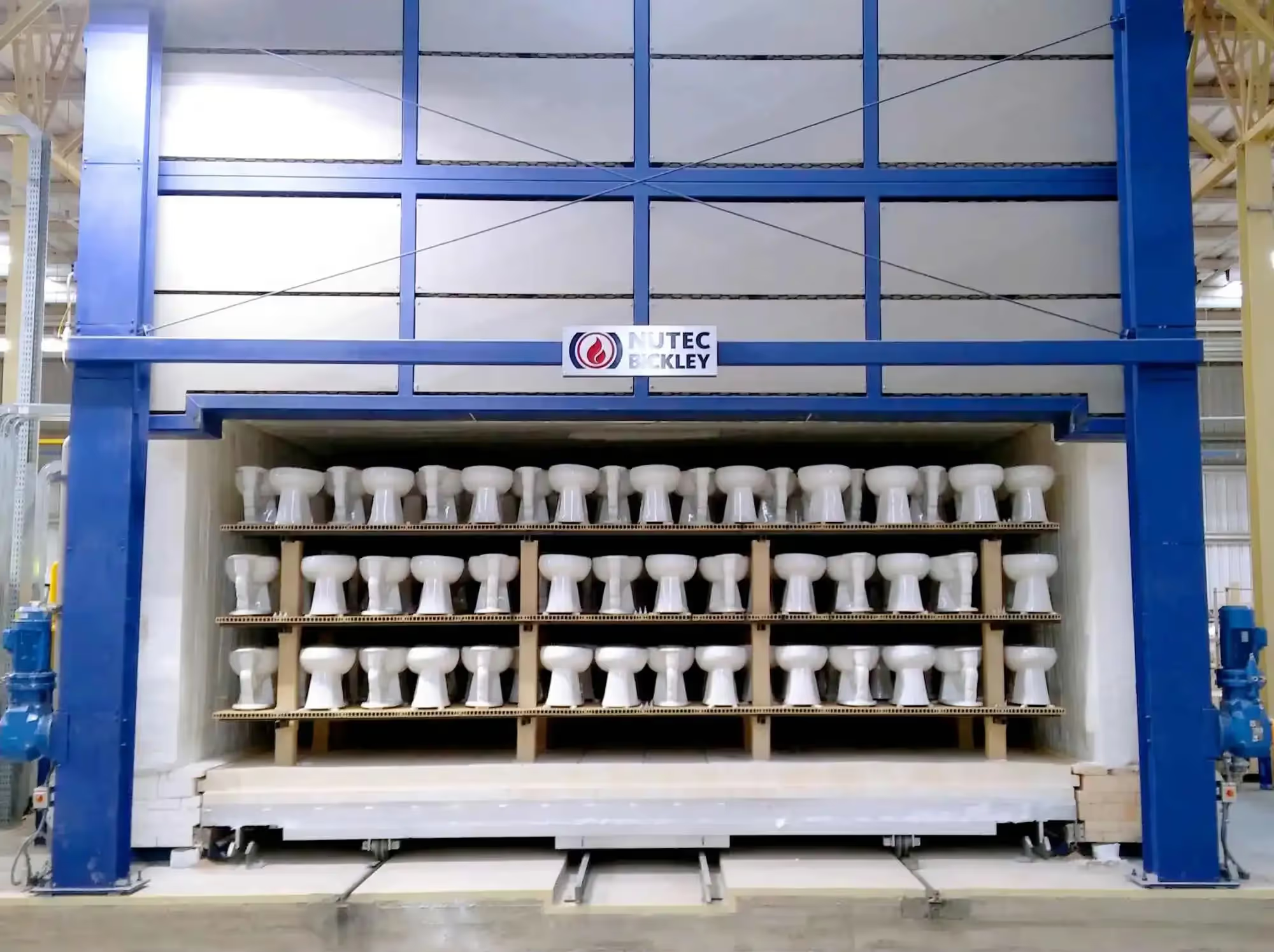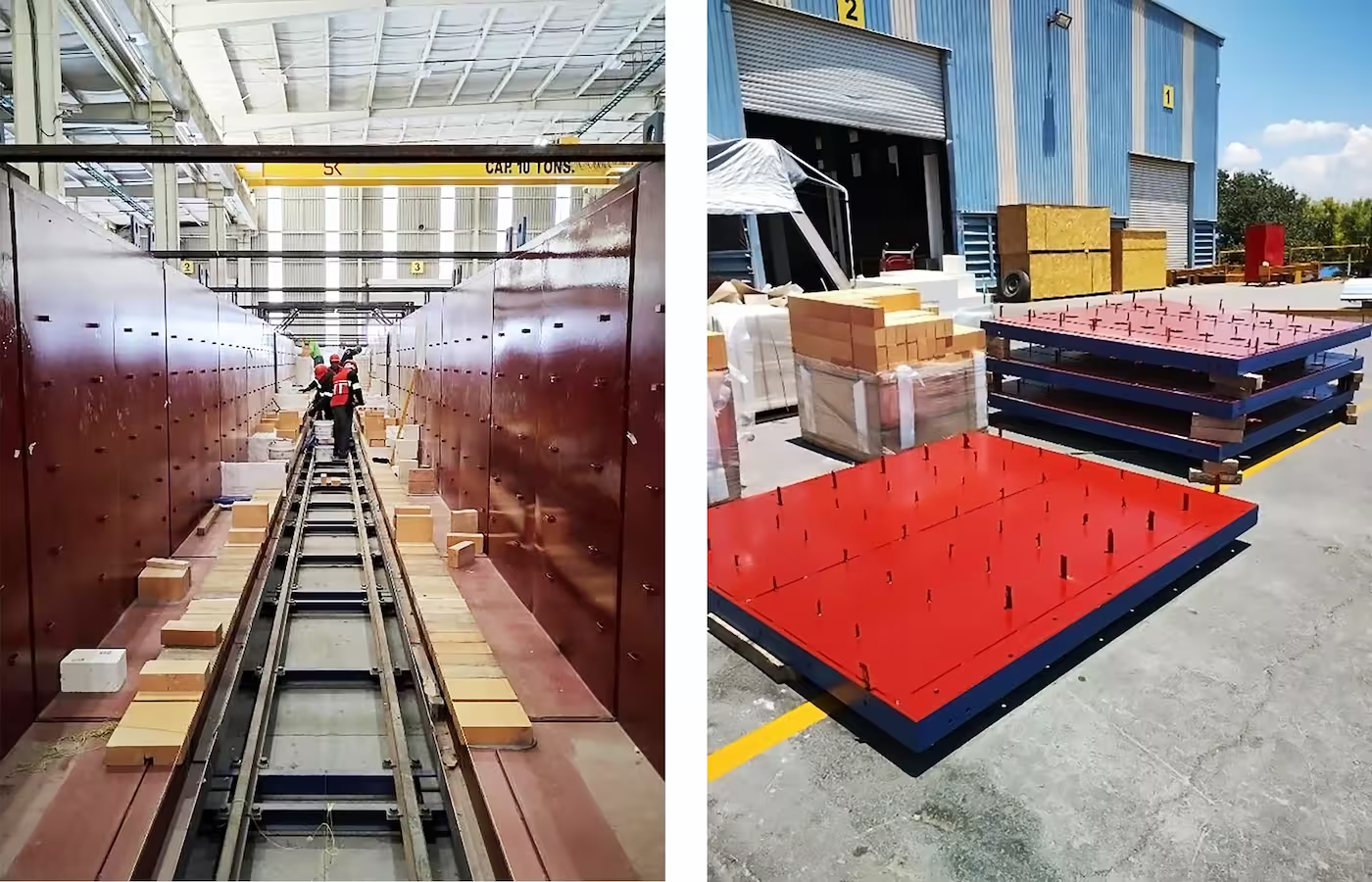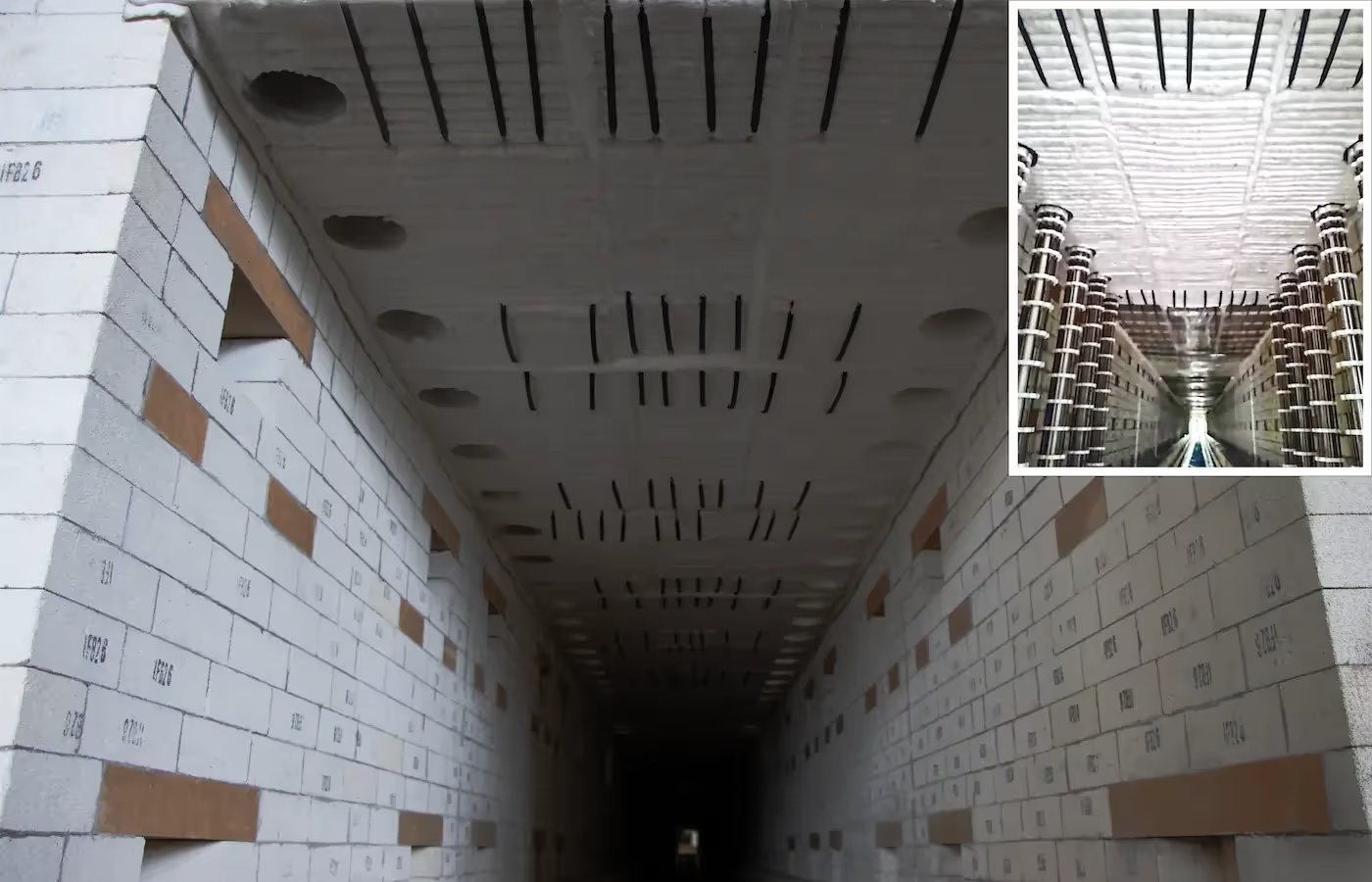Protecting Tunnel Kiln Roofs with NUTEC’s Stud-Tite Hybrid Modules

Ceramic Industry Customer Success Story
Location
Eastern Canada
Operating Temperature
Soak Zone 2500°F (1370°C)
Application
Tunnel Kiln
Project
NUTEC Products
Stud-Tite Hybrid Modules
Anchoring Method
Installation Technique
Unidirectional Construction

Tunnel kilns are commonly used in the ceramic industry. Since they operate for very long campaigns, hard refractory materials are typically used for the tunnel kiln’s refractory system. However, for overhead surfaces, the use of hard refractories may prove to be difficult. For that reason, lightweight fiber based refractory products are often used for overhead sections of tunnel kilns.
For this application, the kiln OEM was faced with several technical challenges. Because of the potential for acid condensation during operation, a protective coating was required for the carbon steel kiln shell. The high temperature of the Soak Zone precluded the use of the most common grades of fiber products. The heat source for this kiln was silicon carbide heating elements which are suspended through the roof of the kiln. Several design accommodations would be necessary to address all these challenges.

The steel panels for the kiln roof had Stud-Tite Studs welded in place and then the protective kiln shell coating was applied.
To facilitate the application of the kiln shell coating, the fiber attachment system must be engineered accordingly. NUTEC’s Application Engineering team selected the use of the Stud-Tite attachment method. The Stud-Tite system uses a pre-welded anchoring stud for the modules. Following the engineered design, the module studs are welded in place and then covered by protective caps while the kiln shell coating is applied. To address the high soak zone temperature of 2500F and provide the OEM an economical and therefore competitive solution, Stud-Tite Hybrid Modules were selected. NUTEC’s Hybrid Modules utilize 3000F rated fiber for the hot face 1/3 of the lining thickness and either 2600 or 2300F rated fiber insulation for the balance of the thickness. Custom module sizes were designed with offset hardware for locations near where the silicon carbide heating elements penetrated the roof of the kiln. This served to allow the heating elements to be easily installed and to avoid any potential electrical short circuits.

Prior to shipment, the kiln is assembled and then taken apart and braced/protected for shipment to the end user’s facility.
The engineered solution worked extremely well for this leading furnace/kiln OEM. The roof was insulated using a series of panels. This work was done in at a local fabrication shop and the insulated panels were shipped to the OEM for erection onto the kiln structure. NUTEC Hybrid modules are serviceable at high operating temperatures without incurring the expense of using a module fabricated from 100% of 3000F rated fiber. Special sized modules were used to span the width of the tunnel kiln and minimize the number of batten strips required for these overhead panels.

The Stud-Tite Modules span across the brick lined sidewalls and allow for insertion of the vertical silicon carbide heating elements suspended from the kiln roof.
The takeaway from this application is twofold. First off, NUTEC has a very broad product portfolio to provide our customers with the best possible thermal management solutions in an economical manner. Secondly, NUTEC’s Application Engineers fully understand our customers’ requirements and as a result are able to provide them the best possible fiber lining system to meet all of their demanding challenges.
At NUTEC, we are committed to providing you with valuable content that helps you make informed decisions for your business. Thank you for taking the time to read this entry and we hope it provided you with insights that you can apply to your operations.
If you have any questions or would like to learn more about our products, please don’t hesitate to contact us.
To get in touch, simply fill out the form, and one of our experts will get back to you as soon as possible.
THIS IS NUTEC
© NUTEC Incorporated 2025